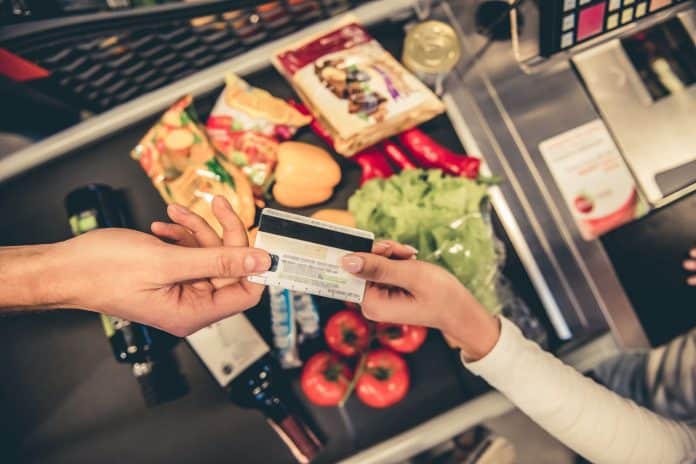
No one likes dealing with the cost of groceries. Sadly, this expense is a necessary part of life. If you don’t eat, you can’t survive. People dealing with financial hardship may struggle with having enough money to handle the cost of groceries on top of everything else (especially if they have other mouths to feed). That is why the government created the Supplemental Nutrition Assistance Program (SNAP). This federal assistance program can help eligible low-income families in need.
What is SNAP?
Also known as food stamps, this program can give nutrition support to qualifying households dealing with financial hardship. This means families, people with disabilities, seniors, and more may be able to benefit. While this program may be able to help a bunch of different types of households, a majority of recipients are families that have children. Since this is a government program, it is federally funded (even though states may contribute to the cost). However, the states will be the ones to manage the program. If a recipient is eligible to receive assistance, they will get funds every month on an electronic benefits transfer (EBT) card. People can use this card at locations that allow it as a form of payment.
Who is Eligible for SNAP?
Even though there are a lot of Americans dealing with financial hardship, not everyone will be able to qualify for this program. It is important to note that eligibility requirements vary by state but you can generally expect similar qualification requirements no matter where you go. If you want to confirm your eligibility status you will need to get in touch with your state agency. Your state agency will be the ones to determine your eligibility status based on your information.
Another benefit to this program is the fact that these applications are free! The best part? If you are approved you will be able to receive benefits all the way back from the date that you handed in your application! Even though you think you may be eligible, that may not be the case. That is why it is not only important to check your eligibility with your state agency but you will also want to keep ineligibility guidelines in mind. Ineligibility guidelines include certain groups of people that will likely not be able to receive benefits like:
- Most college students
- Some legal immigrants
- Individuals on strike
However, even if you may be ineligible, it doesn’t hurt to submit an application since they’re free. The worst that can happen is that you get rejected from SNAP benefits.
Are There SNAP Restrictions?
Since this is a federal assistance program, there are restrictions on benefits that are important to keep in mind. For example, a majority of childless adults can only receive up to three months of benefits unless they work a minimum of 20 hours a week or are a part of a qualifying program. States have the ability to set restrictions like this which is why it is important to see what the guidelines are for your area.
How Much Will You Receive?
The amount of SNAP assistance you will be able to receive is calculated by multiplying your household’s total income (referred to as net income) by 0.3. That is because households are expected to spend 30% of their own resources towards groceries. Once you get that number you will need to subtract the result from the maximum monthly SNAP benefit amount that your household size can receive.
The math can be a bit complicated but you won’t have to worry about that since your state’s agency is the one to calculate this number based on the information you provide. The United States Department of Agriculture (USDA) has a webpage displaying the highest monthly SNAP benefits by household size. As an example, a three-person household can get up to $766 each month, while a household of six can receive as much as $1,386.
How to Submit a SNAP Application?
Each state will have their own application process. That means one state will likely have a different process from another state. Some states may allow online applications, others will not, etc. You can start the process by getting in touch with your state agency by:
- Visiting your local SNAP office
- Going to Your State Agency’s Website
- Calling Your State’s SNAP Toll-Free Number
Once you fill out and submit an application, you can generally expect to find out the results within 30 days. While your application is processing you will need to finish an eligibility interview as well as provide necessary documentation like income verification, personal information, etc.
What Can SNAP Benefit Funds Buy?
The funds that an individual receives on their EBT card cannot be used everywhere. Instead they can only be used to purchase grocery items like:
- Bread
- Cereal
- Dairy Products
- Fish
- Fruits
- Poultry
- Meat
- Non-Alcoholic Beverages
- Other Foods
- Snack Foods
- Vegetables
While SNAP can cover a lot of grocery items, there are still other popular items that EBT cards cannot buy like:
- Alcoholic Beverages
- Live Animals (with Exceptions)
- Medicines
- Non-Food Items
- Supplements
- Tobacco Products
- Vitamins
Alternatives to SNAP Assistance
While SNAP is a great option to consider, there are other food assistance programs that can help Americans in need. Other programs that can help include:
- The Emergency Food Assistance Program (TEFAP)
- Special Supplemental Nutrition Program for Women, Infants, and Children (WIC)
- Farmers’ Market Nutrition Program (FMNP)
The Emergency Food Assistance Program (TEFAP)
TEFAP is a federal program that can help Americans in financial need supplement their diet through emergency food assistance. The USDA offers this program and they purchase nutrient-rich, high-quality food. Once they purchase this food they make it available to state distributing agencies like food banks, soup kitchens, food pantries, etc. The amount of food that each state will receive varies based on the number of people on unemployment and those who are low-income.
Special Supplemental Nutrition Program for Women, Infants, and Children (WIC)
WIC is a specialized food assistance program aimed to help women, infants, and children up to 5 years old who are at nutritional risk. There are two main types of nutrition risk that impact WIC eligibility which are medically-based risks and dietary risks. Medically-based risks include individuals who are underweight, anemic, have poor pregnancy outcomes, etc. Dietary risks include failure to meet current dietary guidelines for Americans, inappropriate feeding practices/nutrition, and more. This program can help support individuals through providing nutritious goods, teaching nutrition education, giving health referrals, health screenings, etc.
Farmers’ Market Nutrition Program (FMNP)
FMNP is a program that works in association with WIC. WIC recipients may be eligible to receive FMNP coupons on top of their normal WIC benefits. These coupons can go towards the cost of qualifying foods from farmers, farmers’ markets, or roadside stands. Regardless of the source, they must be approved by the state agency to accept them as a form of payment! This can help provide WIC recipients even more support with the cost of groceries.
Overall
SNAP is a very helpful program that provides support to millions of Americans in need. It can provide individuals with funds every month on an EBT card that can go towards handling the cost of groceries. The amount of assistance that a household can receive depends on factors like household size, income level, etc. Even though this is a federal program, states are the ones to manage it. This means that the programs will vary based on your location! If you need more information you will want to get in touch with your state’s agency. Besides SNAP, there are other food assistance programs that may be able to help like TEFAP, WIC, and FMNP!
The information in this article is for Oct. 1, 2023, to Sept. 30, 2024.




















